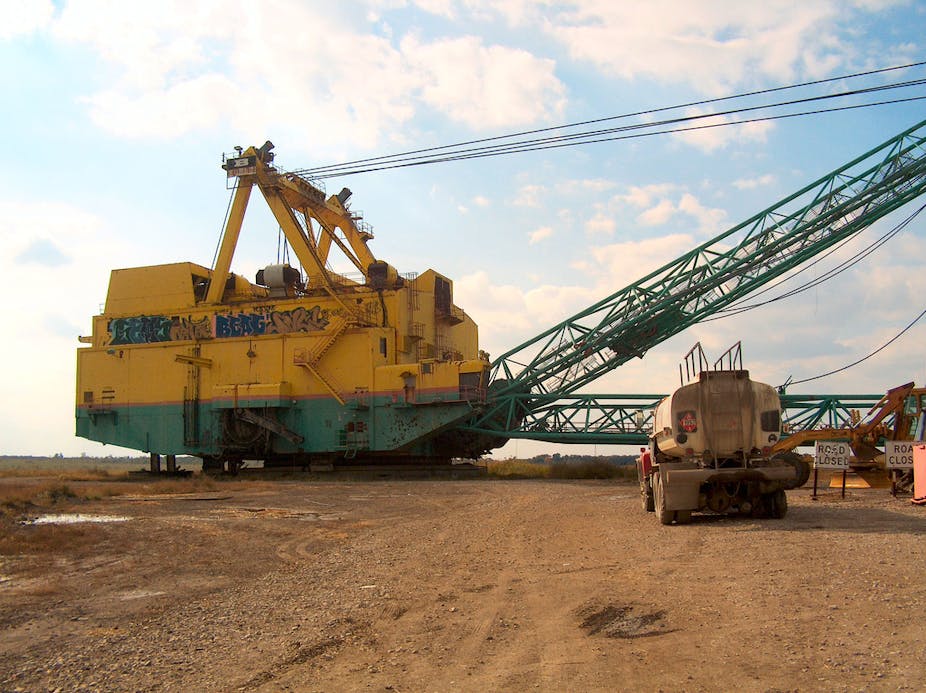The mining industry has been an enthusiastic user of offshore workers through the federal government’s 457 visa program and, more recently, its extension: the enterprise migration agreement (EMA).
Gina Rinehart’s Hancock Prospecting recently became the first company to successfully apply for an EMA covering 1517 foreign workers for its Roy Hill project. And there’s a strong chance other mining companies will follow suit: the Minerals Council of Australia has recently embarked on an advertising campaign in the West Australian and The Australian, arguing that skilled migration is crucial to the continued prosperity of the mining industry.
Miners commonly cite a shortage of workers as the main reason for this enthusiasm but the reasons are more complex.
It is clear that mine development has a peak demand for labour during the construction phase that reduces and changes with the move to production. But there is still substantial evidence that this is not a complete answer.
Australian miners are facing the prospect of dropping commodities prices globally - already being felt in the coal price - fuelled by Europe’s ongoing sovereign debt crisis and a slower recovery in the United States.
To better understand what is happening in the mining industry, it is necessary to look at the composition of employment in a wider context. In terms of numbers, the mining sector is not a large direct employer, providing jobs for less than 100,000 people (2% of Australia’s workforce). In comparison, small to medium enterprises (SMEs) have two million owners and employ five million people.
Since the global financial crisis, both the SME sector and other large businesses with no direct link to mining and agriculture have been under stress.
The result has been that skilled workers have become available to the mining sector, yet there seems to be little effort made to access these workers.
Anecdotal evidence suggests the desire exists for workers in alternative industries to move into the mining sector. For instance, when mining sector employment expos were held in Brisbane and Gold Coast, 10,000 people attended. Similar numbers came along to the same expo in Western Australia.
This is 17 times greater than the number involved in the current Enterprise Migration Agreement granted to Hancock prospecting.
Of course, not all of these job seekers are a direct fit for the mining sector, and some are speculative.
But this group also includes an extensive group of professional and trade qualified applicants. The only shortfall of this group is obtaining the specific ticketing for the industry, which in most cases can be quickly addressed.
Yet on exiting these sessions, many of these skilled people believed there was little chance to connect with the industry, as they had been informed that obtaining these additional qualifications would not ensure they would be considered - let alone employed - within the mining industry.
To be fair, while cost-cutting may be behind the mining industry’s desire for imported labour, Australian workers have been let down by a clear lack of government focus, strategy and commitment to providing the training required for current and future needs within Australia. In some other countries, a high proportion of labour market expenditure by government is invested in “active” policies, such as retraining workers for new and emerging industries and in assistance in labour mobility. Sweden is an exemplifier in this regard.
The inability to provide quick transition processes for people with existing qualifications to move from industry to industry - or for that matter, state to state - is evidence of this situation.
This is in turn reflected in a lack of engagement by many larger miners’ local indigenous communities to help them develop into an effective workforce.
The concept of “local” is important with indigenous workforces, as existing insight indicates that these workers are committed to staying within their homelands. This makes this group ideal long-term employees if trained and employed within their local environment.
The desire by mining industry to import labour is also seen in the inability and lack of desire for industry and governments to understand how to develop appropriate and effective skills, not just for the present but also for the future.
This is evidenced in the current bargaining round within BHP Billiton Mitsubishi Alliance (BMA) and, for the first time in years, workers going on strike for a week over pay and conditions.
Overall, given the relatively small percentage of employment that comprises the mining sector, the apparent enthusiasm of locals for employment in this sector and the concern that new forms of labour market flexibility has the capacity to undermine employment conditions of the existing workforce, many will continue to question the motives behind EMAs, such as that proposed for Roy Hill.
Alongside these concerns are also broader policy questions about how employers and government address labour market demand and supply issues in a more active way, so as to provide training opportunities for communities that are local to mining projects and retraining of workers from other employment sectors that wish to participate in the ongoing mining boom.


